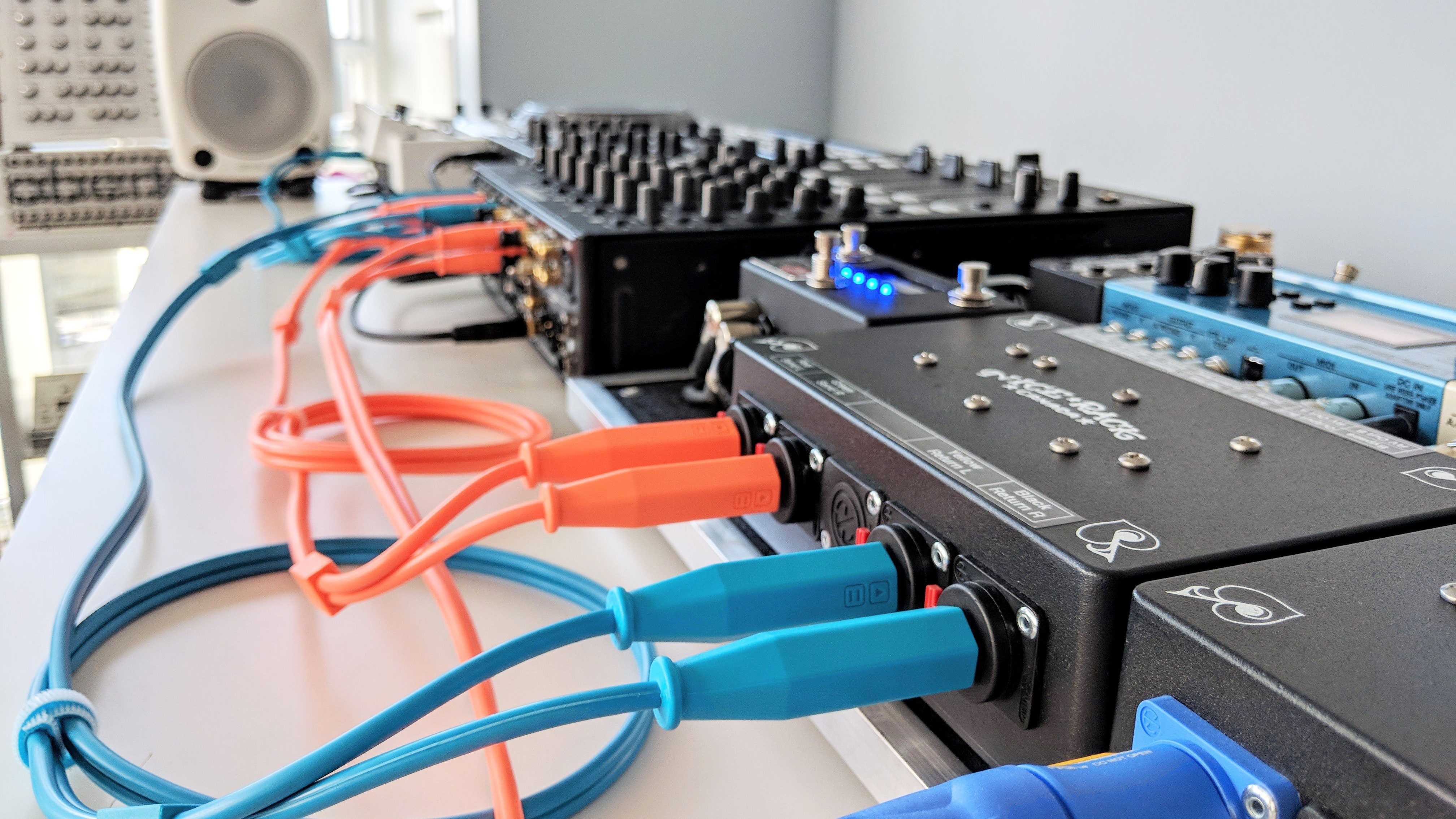Knowing your cables undoubtedly makes you slightly of a geek, but, it is a basic skill that every DJ needs to know. Cables are an integral part of a DJ set-up but without them, nothing works. This can be confusing for any person if they don’t know where to start.
Understanding which cables are required for your set-up is one thing, but, you have to go about connecting everything together as well. Getting it wrong can be embarrassing and not to mention very costly if things went wrong and your gear got damaged. When it comes to cables do treat them with proper care. So let’s go through some of the cables you are most likely to come across while DJing.
There are broadly two categories of audio cables common in DJing mainly Analogue and Digital. Analogue cables transmit electrical audio signals from one end to another. Digital cables transmit data in binary code i.e. zeros and ones, the language that computers speak.
RCA Cable

RCA is the most common type of unbalanced plug a DJ is likely to come across. It’s often used for connecting different things within the DJ booth, such as a digital audio interface to a club mixer. Most inputs on DJ mixers are RCAs and most DJ hardware uses RCA connections mainly phono and line.
Phono is the level that is output by a turntable and is significantly quieter than the line-level outputs of a CDJ or a digital audio interface. Many mixers have switchable inputs separate inputs for the two connections.
Always Double-check that you plug your cables into suitable inputs, a line-level signal plugged into a phono input makes a horrible noise and is detrimental to your mixer.
XLR Cables

XLR is one of the two most common types of balanced plugs. It is used as the master audio output from club mixers, monitors, audio interfaces, PA systems, DJ controllers and for microphones. Since it is a balanced connection, two cables are needed to transmit a stereo signal – one for the left channel and one for the right.
Slightly on the bulky side compared to other connectors but very secure as the plug clips into the place of the socket.
TRS Cable

By far the most commonplace you will see these cables are on headphones. Most of the most popular DJ headphone brands offer a choice of TRS connection sizes. From your phone to your MP3 player to high-end DJ headphones. DJ Mixers as well use these cables as a balanced output alternative to XLR cables. They can be used for either the main or booth output. The Pioneer DJM 900 NSX2 and DDJ-RX use a pair of balanced TRS sockets for the booth outputs.
USB Cable

Universal Serial Bus in short USB, is one of the most common connection types. This cable needs no introduction. For DJs they allow information to be shared between your computer and your gear. For a producer, USB cables are used to connect MIDI keyboard controllers, audio interfaces, modern synths and drum machines.
MIDI Cable

MIDI cables aren’t as common as they used to be, as newer-generation USB cables have the ability to transfer MIDI data directly to the computer. While MIDI cables are used to sync and communicate instructions between gear, they don’t transport sound, Instead, they transmit data using a language known as MIDI (Musical Instrument Digital Interface).
These cables run between a keyboard or a controller to a MIDI interface, which then connects to your computer and lets you control the virtual instruments within your digital audio workstation (DAW).
IEC Cord

IEC cords are used to power many pieces of electronic equipment, including computers, instrument amplifiers and professional audio equipment.
The IEC cable is virtually used on everything from computers to studio monitors and amplifiers.

Ethernet Cable

Ethernet cables are not just used to connect computers to the internet, They are also used for networking hardware such as CDJs and DJ mixers, allowing them to communicate and share tracks from a single USB stick. They link up their connections through a small modem or central hub to help link up the devices.
RCA Mini Jack or 3.5mm Jack To RCA
The mini-jack adaptor is probably the most common cable of its kind. It is used by everyone at spoke point to plug their smartphones or tablets into hi-fi systems. This cable is ideal for connecting your Smartphones, MP3 players & tablets to a stereo receiver, speaker or other RCA-enabled devices. It supports mobile devices containing a standard 3.5mm auxiliary jack, which are commonly associated with headphones.
Do you have any tips for DJ’s that we haven’t covered? Let us know in the comments below.
Follow Beatworx Studio
Facebook | Instagram | Website | YouTube
For more information on our DJ & Music Producer courses head over to our website, or you can also check out our YouTube or Instagram for a bunch of free content.

I have been in the entertainment business for more than a decade. From playing in clubs to managing them and from being a part of competitions to judging them, I’ve come a long way in being on both sides of the industry. A headstrong personality to deal with and a perfectionist. I monitor DJ student progress, help them find placements, and brand building activities.

